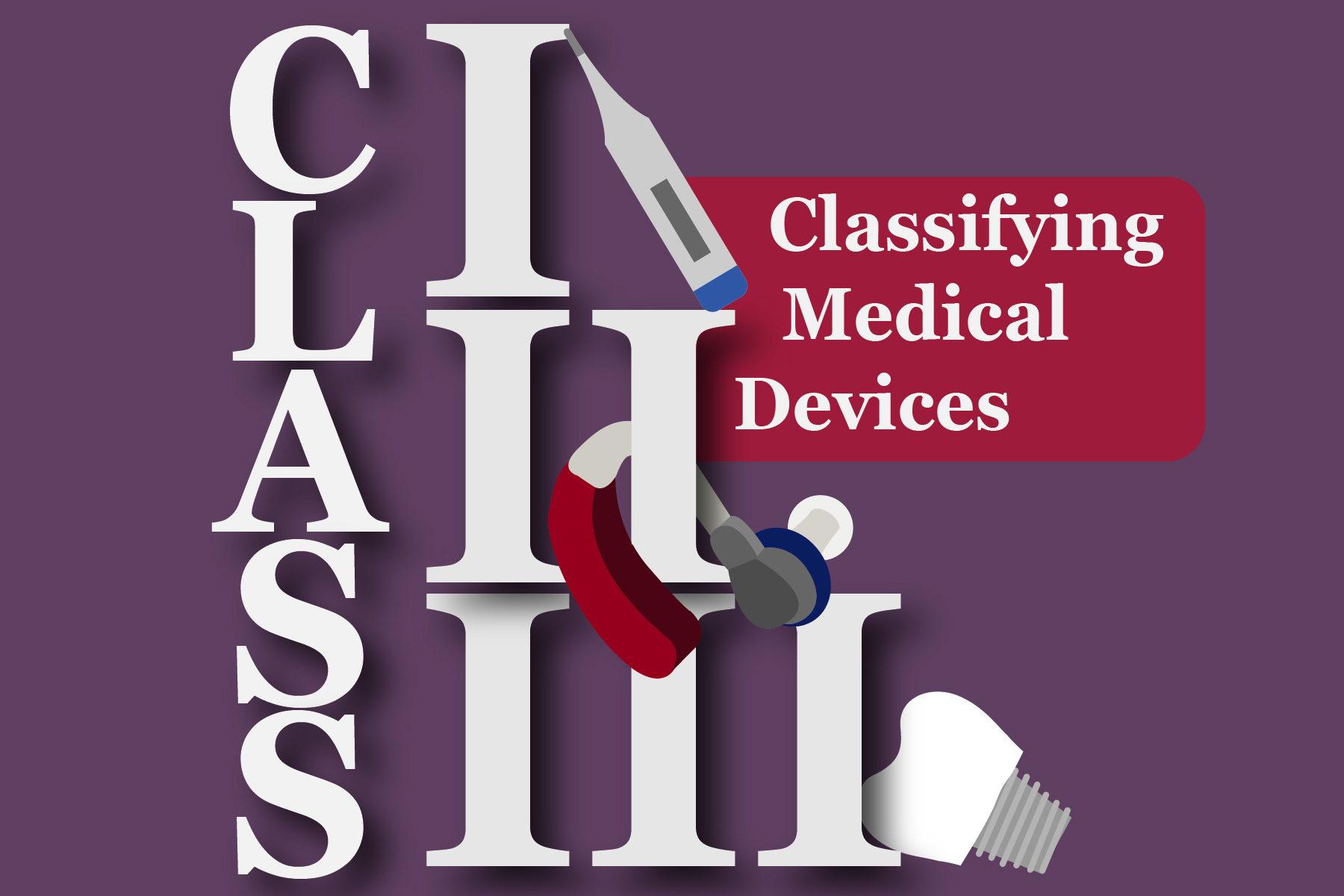Medical devices keep evolving, and with cutting edge technologies such as AI and Cloud, they are continuously adding quality to the overall patient care. Being in the medical sector, where the patient and their care is always a priority, manufacturers are required to follow the FDA regulatory guidelines which ensure that their devices are qualified enough to be released in the market. When it comes to FDA approval, it is essential to know the class of the device. The device class is one factor in determining the regulatory pathway and therefore, identifying the medical device class is a vital first step in the FDA medical device approval process.1
One of the major factors which decide a medical device class is the level of risk associated with the device along with the intended use. Based on this level of risk, the FDA provides three major classes, Classes I, II, and III. As the class number progresses, so does the risk associated with the device. Class I medical devices include devices that have the lowest associated risk and need the least regulation. Examples of class I devices are enema kits and elastic bandaids. Class II medical devices are the devices with low-to-moderate risk and examples include smart wheelchairs, oximeters, and programmers for a pacemaker. Class III medical devices sustain or support human life and are the medical devices that possess the highest risk. Examples include ventilators and pacemakers. The second factor for classifying medical devices is the intended use. The intended use and the corresponding regulatory guidelines for a simple bandaid would not be the same as for a pacemaker or fabricator. As the intended use is related to the risk associated with the device, it is a key parameter that can be used for device classification.2
Another term important for determining the class of medical devices is “exemption”. If a class I device is found to pose minimal harm to users and is built with relatively simpler designs, the device may be exempt from 510(k), which is the premarket notification, and PMA which is a premarket approval. Overall, compared to class II and III medical devices, it is quicker to market class I medical devices. One of the methodologies which can be used to determine a medical device class is to use the FDA provided web-based search interface where medical devices based on class, name, and description can be searched.3 The class of the device is also one factor that decides if a medical device needs to go through clinical trials. Clinical trials are a part of device validation and can be used for performing and measuring device efficiency, safety, and quality.4 Most class III medical devices are subjected to clinical trials because of the higher risk associated with them. In the case of class II medical devices, if the FDA observes that a considerable amount of risk is associated with the device and that it needs clinical data to prove the safety and efficiency, the device may be subject to clinical trials.
To summarize, identifying the medical device class is an important step in the overall medical device approval and clearance process. It decides which regulatory pathway a medical device should take. Do you need help determining the class of your medical device product? Our regulatory experts at EMMA International can help. Contact us at 248-987-4497 or info@emmainternational.com for additional information.
1Srindhi Joshi (June 2020) Clinical Trials for Medical Devices: 5 Expert Tips. Retrieved on November 9, 2020 from https://www.kolabtree.com/blog/clinical-trials-for-medical-devices-5-expert-tips/
2FDA (February 2020). Classify Your Medical Device. Retrieved on November 10, 220 from https://www.fda.gov/medical-devices/overview-device-regulation/classify-your-medical-device.
3FDA (November 2020). Product Classification. Retrieved on November 9, 2020 from https://www.accessdata.fda.gov/scripts/cdrh/cfdocs/cfpcd/classification.cfm
4FDA (December 2017) Learn if a Medical Device Has Been Cleared by FDA for Marketing. Retrieved on November 10, 2020 from https://www.kolabtree.com/blog/clinical-trials-for-medical-devices-5-expert-tips/






